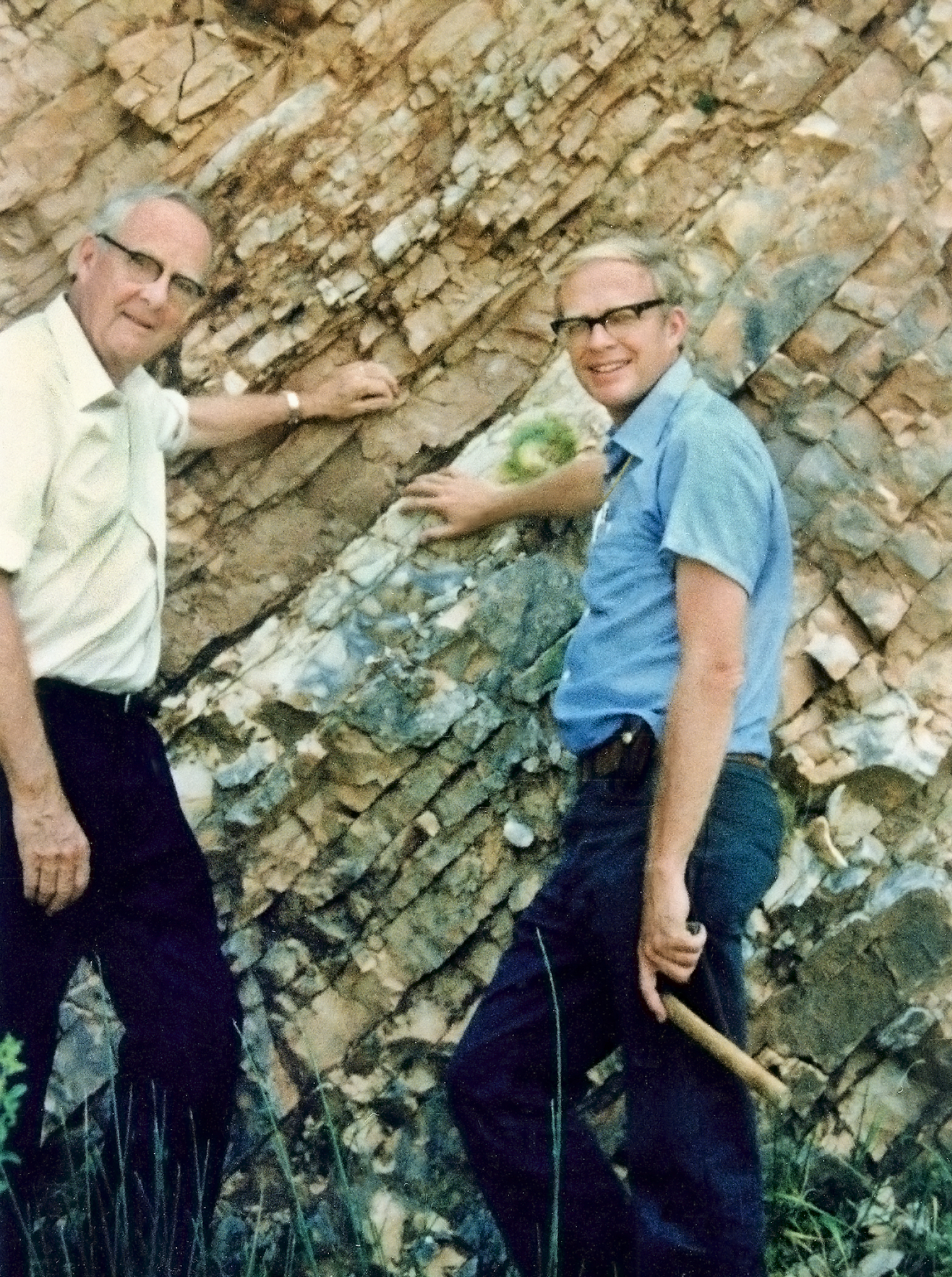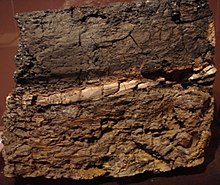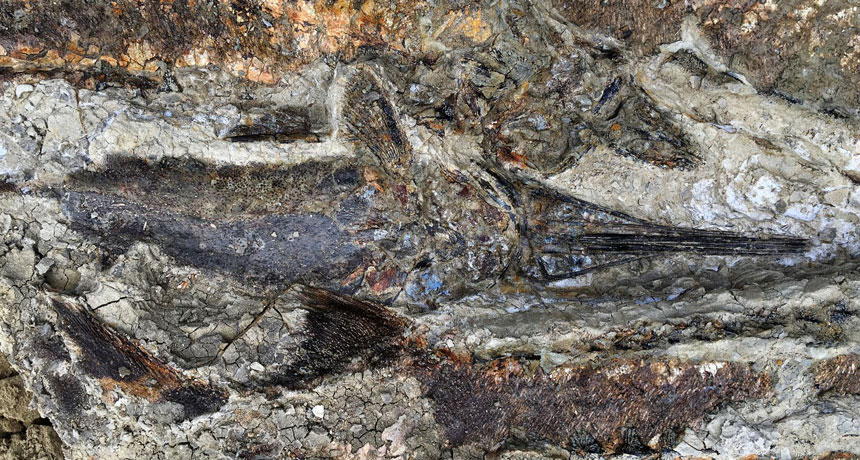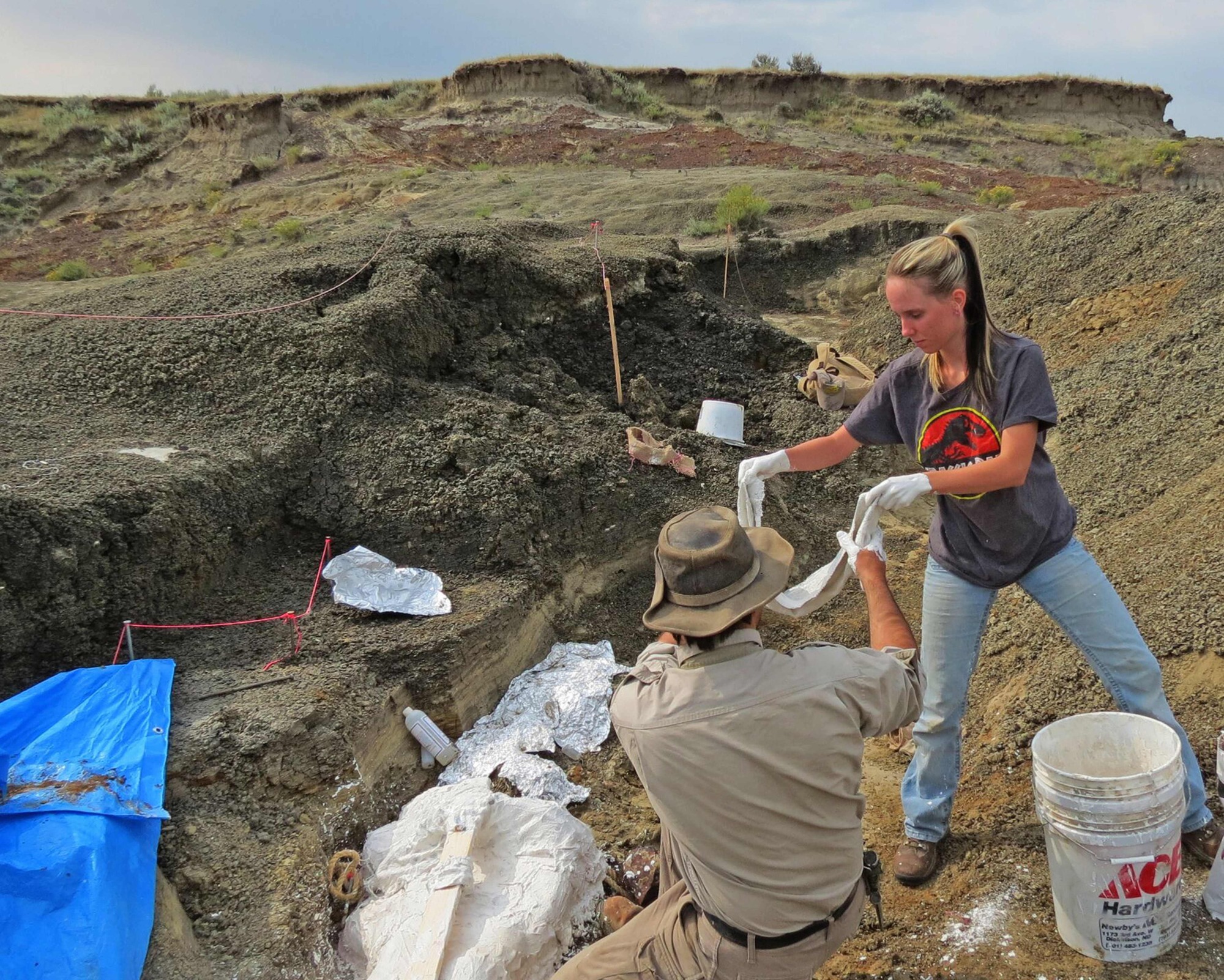Since the idea that an asteroid collision with the Earth was responsible for the extinction of the dinosaurs was first proposed over forty years ago by Walter Alvarez the evidence for such a catastrophe has accumulated slowly but surely. Alvarez based his original idea on evidence collected during his own examinations of the K-t boundary at numerous locations around the world. (The K-t boundary is the layer of rock strata that marks the end of the dinosaurs, below the boundary is the Cretaceous period rich in dinosaur fossils, above it is the Tertiary period with absolutely none! The K-t boundary is dated to some 66 million years ago.)

What Alvarez found at the K-t was a very thin layer of rock rich in the element iridium, which is very rare of Earth but much more common on meteoroids. It was this thin layer that led him to speculate that an asteroid; perhaps 10 kilometers in diameter had struck the Earth triggering a worldwide extinction.
Then in 1978 the actual crater, now named Chicxulub, formed by that asteroid was identified centered just off shore of the Yucatan peninsula of Mexico. Evidence from that crater confirmed that the amount of energy released by that collision was indeed sufficient to cause mass destruction around the world. Additionally, evidence of rocks distorted by high temperature and pressure and material thrown about by enormous tsunamis has been found throughout both North and South America. Still, some researchers have asked, if the dinosaurs, and many other creatures became extinct in such a violent episode, shouldn’t we be able to find a mass graveyard showing some unmistakable signs of such an event.

Now a team of paleontologists from the University of Kansas has announced the discovery of a fossil site that provides just the smoking gun they were looking for. Led by paleontologist Robert DePalma the site is called Tanis and is located in the Hell Creek Formation in the southwestern corner of North Dakota.

The fossils recovered from the site consist of a mashup of freshwater and saltwater animals and plants that appear to have all perished in a very short period of time. More telling however was that some of the fish were found to have small, glass like balls of compressed and heated rock imbedded in their gills as if they had breathed them in. These small rocky balls are known as tektites, a common product of volcanic activity or an asteroid strike. The fact that these tektites were found more than 3,000 kilometers from where the asteroid struck is a testament to the power that had been unleashed.


So complete and well defined are the remains from the Tanis site that the paleontologists believe that they can actually make out the sequence of the events that occurred there. It appears that first came a tremendous seismic surge, an earthquake of such power as to dwarf any in recorded history. This geologic upheaval began the mixing of fresh and saltwater environments that continued when a massive tsunami followed some 16-18 hours later. Finally, over a period of days or even months a thick layer of ash would have fallen from the skies covering the dead and dying animals, leaving them for us to uncover 66 million years later.

It is true that no dinosaur fossils have been discovered at Tanis so far; the site appears to have been a shallow water environment. Still one may turn up whose body got washed into the area. If not sooner or later we’ll find another site that has dinosaurs, it’s only a matter of time, and time is one thing this old Earth has got plenty of.
